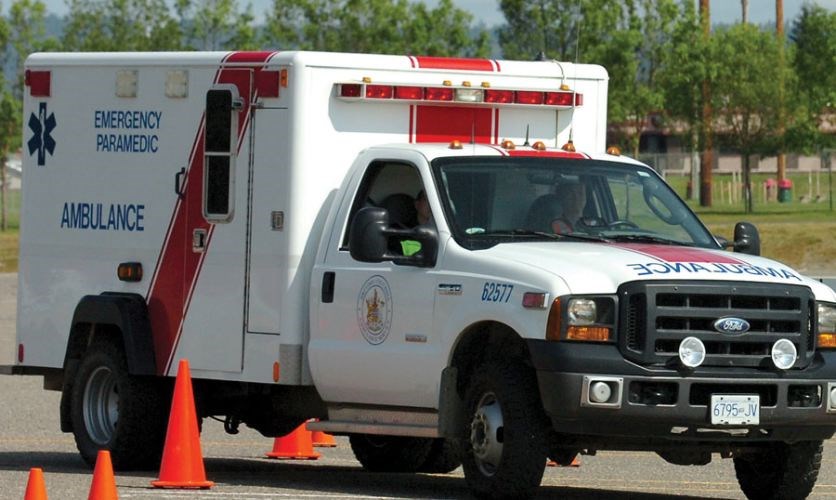Paramedics in Prince George will be turning on their lights and sirens less often under new regulations authorized by the B.C. Ambulance Service, but the agency insists patient care won't be compromised.
The changes to the B.C. Ambulance Service (BCAS) resource allocation plan are designed to improve safety by reducing the number of times ambulances are involved in crashes on the way to a scene of a call.
"The high speed driving with lights and sirens is dangerous," said BCAS vice president of medical programs Dr. William Dick. "There's a risk to the public and the paramedics from motor vehicle crashes - and they do occur every year."
The new policy aims to cut down on the number of times the lights and sirens are deployed by about 29 per cent by reclassifying how paramedics respond to some calls. That means that more often than in the past, paramedics will respond by driving normally, without the use of their emergency signals.
The new policy has also taken a look at when advanced life support paramedics should and shouldn't be deployed, with the aim of freeing them up for critical calls.
The number of calls crews will respond to will be unchanged under the new policy.
When someone calls for an ambulance, the dispatcher asks a series of questions to determine how the BCAS should respond. In a city like Prince George, it must be determined if an advanced life support team should be sent or a basic life support crew. Then the dispatcher must decide if they should be sent with their lights and sirens on or using a routine response.
The dispatcher puts all the information into a system, which provides a determinant to help decide which type and mode of response should be used.
Dick said in the case of a call about a fall, in the past BCAS would have sent their crews to the scene with lights and sirens, but now they will go without the emergency signals in use.
"We looked at all of these calls, and there are 12,000 calls like that per year," he said. "We looked at whether there were any problems with their vital signs, whether there were any critical interventions that had to occur by paramedics . . . and we looked at their outcomes and in the end we realized we didn't need to go hot to those calls."
The changes were made after the BCAS convened a panel to review its resource allocation plan, something that's done routinely every few years. What was different about this review is the group used a more rigid scientific methodology, rather than relying on anecdotal evidence.
The panel of first responders, paramedics, dispatchers, operations officials and medical staff with expertise in pre-hospital care looked at more than 630,000 calls over two years. They analyzed what paramedics had to do to help the patients and how the patients responded to the treatment.
The new BCAS response plans do not directly impact how first responders react to calls, but the ambulance service plans to meet with communities to discus how the new ambulance policy will affect local first responders.
Dick said patient care won't be affected because the routine response in a city like Prince George only takes marginally longer than a lights-and-sirens call.
"The time savings in a metropolitan or urban area are in the range of minute or two," he said. "In a cardiac arrest that may make a difference and there's no change to those kinds of calls."
Even for rural calls, Dick said using a routine response won't make a major difference, especially if traffic isn't heavy. When ambulances turn on their lights and sirens they are allowed to travel up to 25 km/h above the posted speed limit.
"Surprisingly it doesn't make a great deal of difference," he said. "It depends on the community, it depends on distance, but it can be a matter of a few minutes."



